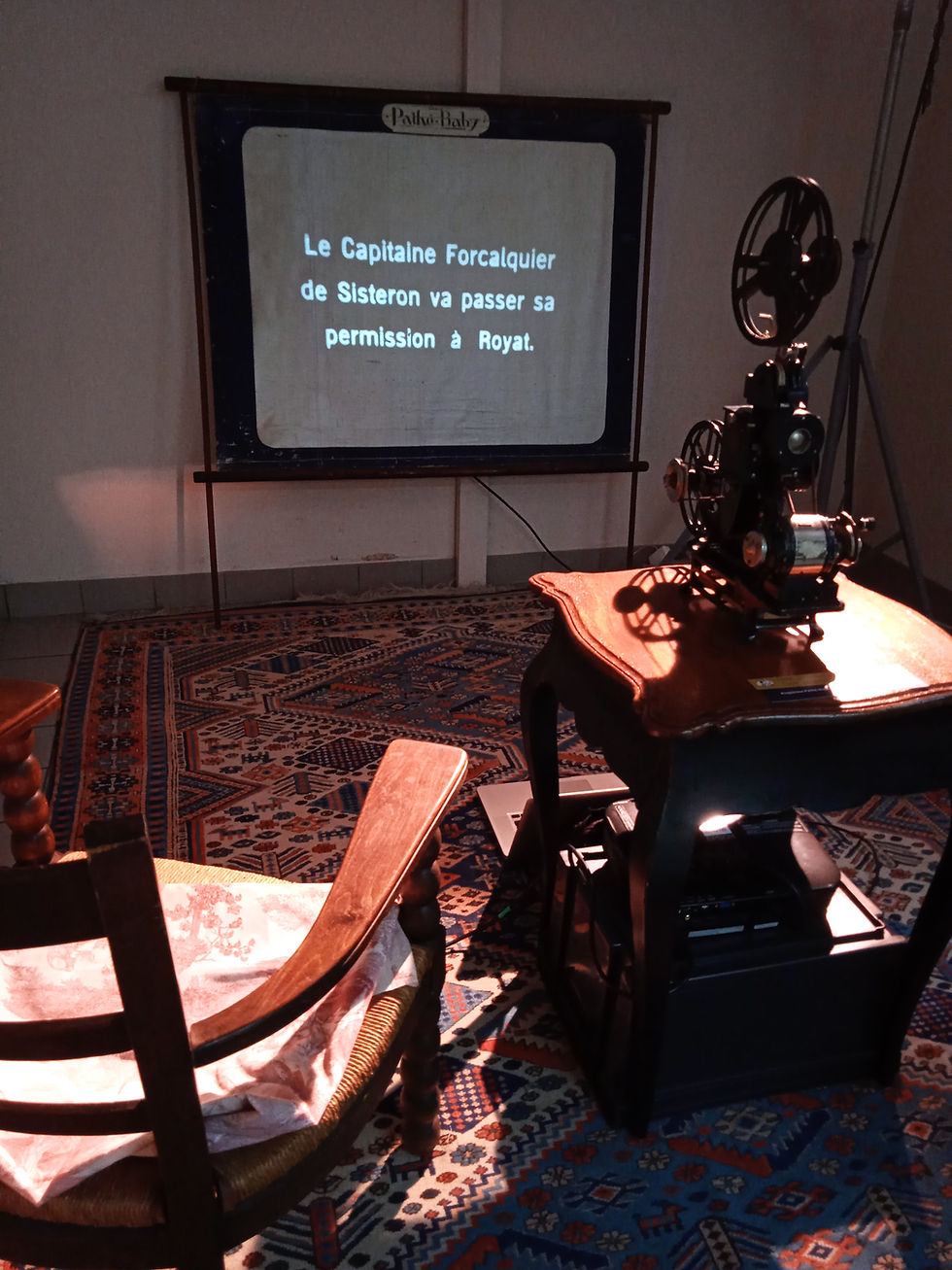Amphora from Saint-Etienne
- Aleksandr Kiselev

- Nov 21, 2022
- 3 min read

32nd European meeting of INEDITS
(European Association - Amateur films/Memory of Europe)
Aleksandr Kiselev, Marina Drozdova
It is rare that an artform fits into a time frame. Making amateur movies is one of those artforms. It starts at the beginning of the twentieth century, and ends at the end of it, giving way to the fight against cognitive dissonance in the form of "selfies" - an attempt to document one's own existence.
Those who made amateur movies pursued other goals, perhaps unconsciously. It was an expensive process, which meant that a person with the camera - before clicking on the "start" button - had to decide if what was happening in front of the lens was worth filming to preserve forever, in the manner of the cuneiform tablets of the Sumerians or the vases of antiquity.
There is no need to criticize the content here. Sumerians didn't record revelations, and the ancient potter did not create masterpieces while making his vases. But here we are approaching the archaeological notion of the "cultural layer," - part of history that is not associated with rulers, victories, triumphs, and global tectonic shifts in development of civilizations. We are approaching a human being. In this case, an amateur with a movie camera.
Everyone who has ever filmed with a small movie camera, could hear the sound it makes like a cicada song on a summer evening, could smell the film, which smells differently when you put it in or after it has been developed… And then waiting for a miracle to occur after the film is put into a projector. What would one see? It's always a mystery. Every movie maker knows that each camera has its own temperament. Some cameras like to shoot landscapes, others - holidays. Some cameras love to film people, not everyone, though, but selectively. For example, it might love this girl in a hat, and she looks amazing on screen, no matter how you shoot her, and at the same time it might not like that dark-haired man, even if he is your boss, so he always looks on film like a caricature of himself.

The small town of Saint-Etienne, located not far from pompous Lyon, offers pleasant views, nice architecture, cute cafes and the cinematheque. It considers itself to be the oldest in France and celebrates it’s centenary. Even if it’s not completely accurate, let’s show our respect. After all, this is not a competition. It is not that important to know who started to run first. What’s important is who is still running.
And the Cinematheque of Saint-Etienne is still on track. A huge library with a busy reading room, which is quite unusual. Viewing rooms. Auditoriums. An extremely interesting exhibition of old film projectors, some of which are in working order. A collection of amateur video documentaries shot on 9.5 mm film (9,5 mm format invented by Charles Pathe in 1922).

Most of these vide materials have been digitized and are available to visitors. This is a great solution since any museum curator knows how troublesome it is to give access to originals, which could be so easily damaged. So working with digitized copies is beneficial to both the custodians and the visitors or researchers.
Now, let's go back for a moment to what's on those reels. At first glance, nothing special. Birthdays, parties, Christmas celebrations and vacations... Nothing special. Maybe not that important for History, but infinitely interesting and touching, like this randomly found diary entry. "There were potatoes for dinner tonight, and Dad made everyone laugh by pretending to be a potato that was about to be cooked." That's what real human history is made of.

INEDITS was created in 1991 to encourage the collection, conservation, stydy and development of amateur films – also called unpublished films. Today it gathers associations, institutions, researchers, audiovisual professionals from European countries.
During the 32nd meeting there were a lot of discussions, professional workshops, round-tables, screenings:
* New heritage perspectives»- informal artistic collectives, collaborative spaces of collection, conservation and diffusion. Who are the actors of the amateur archives ?"
*New scientific perspectives - 100 years after the invention of the 9.5mm format, the amateur cinema at the University ?"
* The place of dance in amateur cinema
* The use of sport archives filmed by spectators
* Teaching the Algerian war in secondary school from films
* Century of the 9,5 mm
* 100 years – 100 films of 9,5 format
* Selection Kino Retro 3087
The photos for the article - Cinémathèque de Saint-Etienne



Comments